

This week The English Apple Man continues with more information from last week's BAPL Niab research meeting
Below: Rachel McGauley - Overview of how BAPL research is supporting apple and pear growers, reviewing the BAPL research programme which she manages
Overview of how BAPL research is supporting apple and pear growers (Rachel McGauley
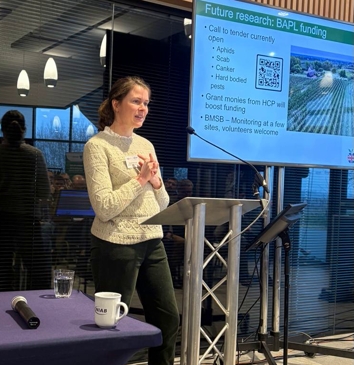 British Apples & Pears Limited (BAPL) is a grower-funded, not-for-profit organisation that represents all commercial apple and pear growers in the UK.
British Apples & Pears Limited (BAPL) is a grower-funded, not-for-profit organisation that represents all commercial apple and pear growers in the UK.
BAPL activities include industry representation, government liaison, data gathering and consumer awareness raising and promotion.
The organisation also funds much-needed research and development to protect our wonderful crop. 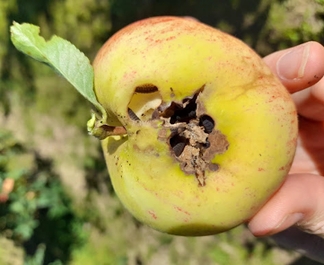 BAPL Board
BAPL Board
Overview of how BAPL research is supporting apple and pear growers
Board Technical Committee Agronomy Meetings Correspondence and networking
 Chaired by Rob Saunders
Chaired by Rob Saunders
11 x Grower members (organic, conventional, SE and W. Mids)
2 x Agronomist advisors - HCP - Research programme manager - 1 x advisor NDA with HCP
Project steering groups - Meet 2 x per year (+ project meetings and correspondence)
All volunteers, many previously on the AHDB TF Panel, years of meetings, emails and phone calls from me. Thank you!!!
Click on: HCP Website news
BAPL Annual meeting at the end of the season
'Meet before Autumn TC meeting - meeting notes are shared with Technical Committee'
Review crop protection risk register (with mitigation) and make recommended changes to the TC
Discuss concerns and crop protection priorities for the future (loss of products, new/invasive P&D, regulatory concerns)
Update from HCP and discussions on products (priorities for EAMUs/EAs, EAMU pipeline, products considered at risk, products available elsewhere to investigate)
Their advice is invaluable - Thank you!!
Direct funding through calls to tender (PAPPLe, Woodlice)
Funding of efficacy trials through HCP (Scab, Canker)
Co-funded projects (Scab programme)
Applications for funding (Storage, Biochar)
Below: Papple fruit
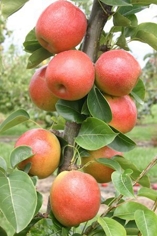 The Papple (whose cultivar name is Prem109) was bred by Plant and Food Research in New Zealand, where it is being grown. It is being commercialized by the joint venture company Prevar Limited, which licensed the global marketing rights to the Associated International Group of Nurseries.
The Papple (whose cultivar name is Prem109) was bred by Plant and Food Research in New Zealand, where it is being grown. It is being commercialized by the joint venture company Prevar Limited, which licensed the global marketing rights to the Associated International Group of Nurseries.
In turn, AIGN has licensed use of the Papple trademark in the United Kingdom to Worldwide Fruit, an international fruit marketing and distribution company that supplies apples and pears to major U.K. retailers. Worldwide Fruit imports New Zealand Papples and plans to plant 15,000 Papple trees in the United Kingdom within the next two years.
Variety knowledge hub
Would it be useful to have a shared knowledge hub for new varieties/clones
which records information relevant to climate change such as:
* Blossom dates 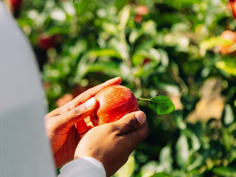
* Drought tolerance
* Resilience to water logging
* Canker incidence
* Susceptibility to sun scorch
* Winter chill requirement
* Pest and disease resistance
* Marketable yield and grade out
* Where is the line between commercial advantage and the industry working
together? Would breeders have any objection to a knowledge hub like this
existing? Does it matter if they do?
* Thoughts to research@britishapplesandpears.co.uk
The English Apple Man comments on the rise of woodlice as a problem in UK apple orchards.
The rise in woodlice numbers is a relatively new phenomenon. It certainly was not a problem when I was growing apples circa 30 years ago. Discussing the rise of the woodlouse with my friend and Avalon technical manager Nigel Jenner, I speculated that the rise of woodlice numbers is because we are no longer using insecticides which may have been involuntarily controlling their numbers, while
Nigel said that may be a factor, he suspects the increased use of wood mulch around the trees, providing a moist environment is drawing increasing numbers of woodlice into the orchard environment!
(moisture is proven to be a prerequisite for woodlice as demonstrated in Nigel Jenner's very informative video)
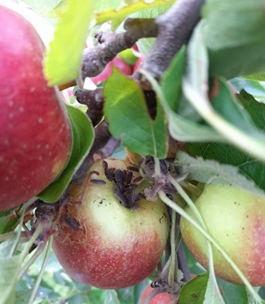 Woodlice
Woodlice
In recent years - large numbers of woodlice appearing in orchards, Little is still known about woodlice behaviour/ biology in orchards
Research Objectives Monitor woodlice biology and behaviour in commercial apple orchard and Evaluate potential IPM compatible control methods.
Apple cluster monitoring
Monitor 15 trees, 5 clusters per tree use Woodlice monitoring boards, with 10 monitoring boards. at base of trees
Grease bands - 14 trees with grease bands - Environmental conditions - Soil moisture -Temperature and humidity loggers
and Fruit maturity.
Below: L-R. Clusters - Grease band - Monitor board - Nematodes
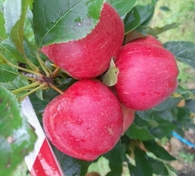

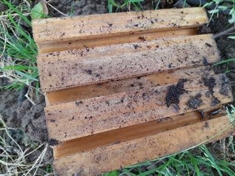
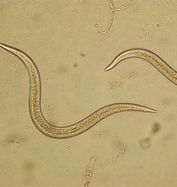
Objective 2: Evaluate potential IPM compatible control methods
Toxic baits e.g. ferric phosphate - Woodlice already in trees? - Bait spray onto trees?
ProBandz/ Combi protec approved in UK with all authorised PPPs (max 50% of approved rate)
Lab assay - treatments added to untreated leaves
Woodlice damage worse later in season - Link with ripening? -Woodlice in trees as early as late August
When are they entering trees?
Phagostimulant Baits applied to trees potentially an option? - Need appropriate killing agent
Tests ongoing - Nematodes - S. carpocapsae. Woodlice beneficial Refuges, chemical attractant/ repellants
Below: Objective 1 results. number of days before woodlice start feeding on the apples in container.
Table 2: Percentage of woodlice damage apples after 4 days under controlled conditions in the laboratory (N =
Sampling date - Woodlice damage (%)
D1. 22/08/24 = 0% - D2. 29/08/24 = 0% - D3. 05/09/24= 0% - D4. 12/09/24 = 33.3% - D5. 19/09/24 = 25% - D6. 26/09/24 = 33.3%
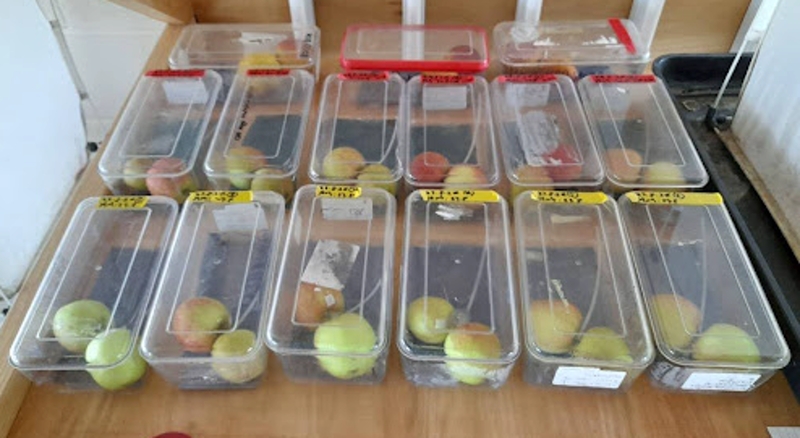
Click on: Nigel Jenner - researching Woodlice
![]() That is all for this week, more from BAPL Niab day next week
That is all for this week, more from BAPL Niab day next week
Take care
The English Apple Man